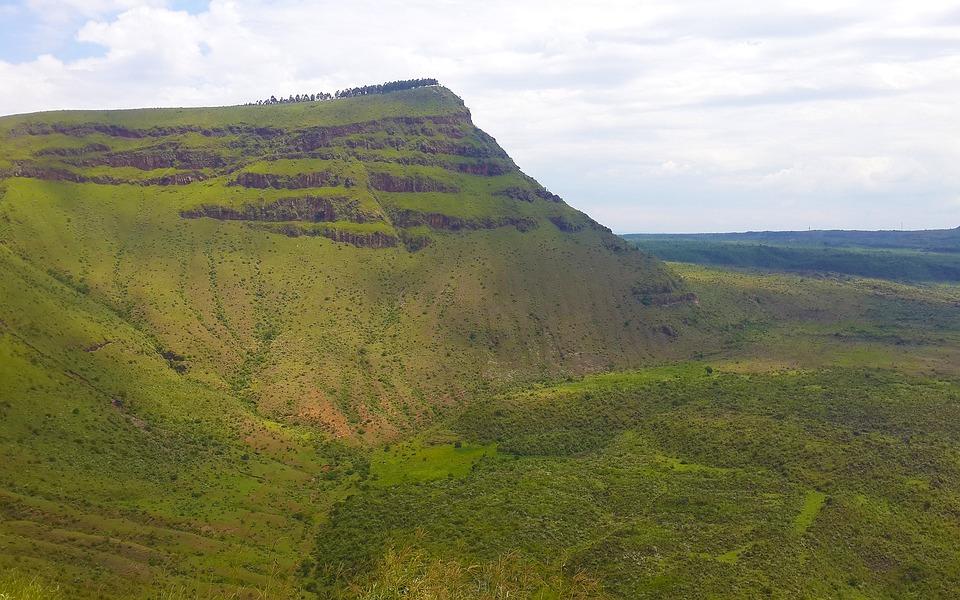Plan to fell indigenous forest for eucalyptus plantation sparks outrage in Kenya
The 1,500-acre Menengai Forest provides buffer between fast-growing city and vulnerable national park

By Caroline Chebet for The Standard in Kenya
Residents and conservationists have criticised a decision by the Kenya Forest Service (KFS) to clear more than 1,500 acres of indigenous trees at Menengai forest to accommodate farmers.
The forest has since 1930 been considered a buffer zone between Lake Nakuru National Park and a rapidly expanding Nakuru town.
The Standard has established that some 1,526 acres of indigenous trees are being cleared to pave way for exotic bluegums to be cultivated under the Plantation Establishment and Livelihood Improvement Scheme (Pelis), formerly known as the shamba system.
A 2018 report on the status of forests in Kenya revealed that Pelis was the most abused scheme in the sector and that it contributed to the declining indigenous forest cover in the country.
In the Pelis scheme, KFS allows communities living next to forests to cultivate crops while taking care of young trees.
However, the 2018 task force indicated that the scheme led to the illegal conversion of indigenous forest land into plantations.
The KFS has defended the decision. “The challenge with Menengai forest is illegal logging and forest fires. The shrubs and a few indigenous tree species are susceptible to forest fires and we are replacing them with bluegum. The area is under Pelis,” said Erastus Mugo, the forest station manager.
A number of residents and conservationists are, however, worried that the scheme will strip off Menengai hills of natural forest cover.
Menengai is a major tourist attraction, being home to the world-renown Menengai crater and a major geothermal electricity generation plant.
Conservationists say clearing huge swathes of the natural forest would be an environmental disaster.
“Felling of these trees and shrubs that hold the soil in the area together is calling for disaster. The forest is also home to wildlife and burrowing animals. Replacing the natural cover with exotic trees amounts to doing away with the area’s ecosystem,” said Miheso Musindi, secretary of Milimani Residents Association.
According to Mr Miheso, the loose soils of Menengai make the area susceptible to landslides and fault lines and replacing the natural forest with exotic trees will expose neighbouring estates to danger and Lake Nakuru to siltation.
“The decision to replace the indigenous tree species is worrying. It means that all the soil will be swept downstream to Lake Nakuru. There will be no control of water running downhill and this will cause more havoc,” he said.
However, KFS says the targeted area forms an insignificant part of the 14,864-acre forest.
“The forest is zoned, with the natural forest covering 5,400 hectares (13,338 acres) and an exotic forest covering 618 ha (1,526 acres),” said Mugo.
He said protecting the natural forest from fires and loggers was challenging, especially with inadequate staff. “We have 12 officers tasked to take care of 13,338 acres,” he said.
According to the KFS officer, bluegums would be easier to manage and more profitable.
“Bluegums are more resistant to fire outbreaks. They also generate revenue,” he said.
But residents have poked holes into the KFS argument.
Benson Ng’ang’a said the indigenous trees cover has over the years survived forest fires, intense logging and landslides.
“This area is so prone to fault lines that it is hard to maintain the roads passing through,” he said.
However, farmers set to benefit from the forest’s clearing supported the KFS plan.
“It will give us land to farm potatoes and beans,” said Abishack Muthoni.

This article is reproduced here as part of the Giants Club African Conservation Journalism Fellowships, a programme of the charity Space for Giants and supported by the majority shareholder of ESI Media, which includes independent.co.uk. It aims to expand the reach of conservation and environmental journalism in Africa, and bring more African voices into the international conservation debate. Read the original story here.


Join our commenting forum
Join thought-provoking conversations, follow other Independent readers and see their replies